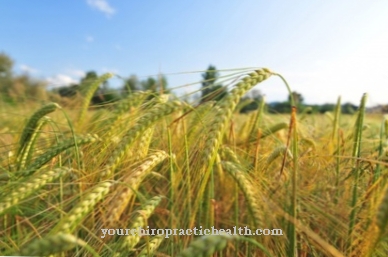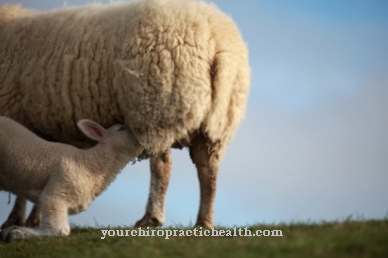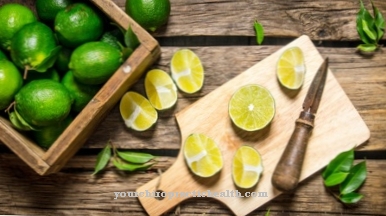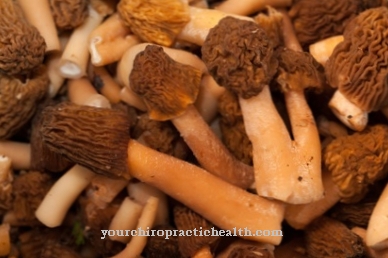Brown mustard is much hotter than yellow mustard, but can be used just like yellow mustard - personal taste is required here.
Yellow mustard is a very typical European spice, but more and more people are turning to the original mustard, as hot and fresh is becoming more and more popular. Like all types of mustard, brown mustard only develops its heat when it comes into contact with saliva or liquid. As a traditional remedy and spice, mustard is mentioned in many stories, myths and wisdom.
What you should know about brown mustard

The mustard plant is annual and blooms in yellow, then forms pods in which the brown mustard seeds with their spherical shape ripen. Just before the ripe pods open to release the grains, they are harvested and left to dry for a while.
Then the pods are threshed and the grains sorted out. After the grains have been sifted, they are refined with wine, must or alcohol. The plant needs a dry and warm climate in order to be able to develop well, then it grows out quite quickly. The brown mustard plant grows up to 1.80 m high, a lot higher than the other varieties. The mustard plant is undemanding and germinates quickly, its deep roots aerate and loosen the soil.
Brown mustard has little in common with conventional white mustard, because if you look closely, brown mustard is not a mustard plant at all, because it belongs to the genus of the cabbage family.
Brown mustard has a nutty taste with an aromatic, piquant spice, but is significantly hotter than yellow mustard. A burning, horseradish-like sharpness rises up the palate with a tingling sensation only when the mustard has come into contact with the saliva. Not only the choice of mustard seed is decisive for the degree of spiciness, but also the painting - the mustard becomes hotter, the finer the mustard seed is ground. The mustard should be allowed to mature at least eight weeks so that it can develop its full aroma, finer aromas come to the fore and the aggressive sharpness is reduced. Dijon mustard is the most popular among gourmets - it is made only from brown mustard.
The brown and black mustards probably come from the Middle East and Central Asia, but it cannot be precisely determined. In any case, its history can be traced back to Asia for more than 3,000 years. In China it was already being cultivated and used for seasoning at this time. It is known that the Chinese already appreciated the spiciness of brown mustard back then. On the old caravan routes his way then led via India to Arabia.
Today the largest growing areas for brown mustard are in Nepal, India, China, Holland, Hungary as well as Russia, Canada, France and Germany. Germany and France are among the smallest growing areas. The mustard makers in Dijon have been making the famous Dijon mustard since the 13th century - and only from brown mustards. In ancient Rome, doctors recommended it for hair loss, snake bites, lice, leprosy and as an aphrodisiac.
Making brown mustard is not difficult, because the recipe has been unchanged for two thousand years. After a quality control has been carried out and the mustard seeds have been subjected to a thorough cleaning, the seeds come between rollers and are finely, finely or coarsely ground into meal, which can then be de-oiled.
Not all manufacturers do that, Dijon mustard has always never been de-oiled so that the full aroma is retained. Most organic manufacturers also do the same and prefer not de-oiled mustard. The mustard develops its typical bouquet when salt, water, vinegar and possibly spices have been added and the mash has had time to ferment. Only then can the mash be stirred and ground until it becomes a creamy and smooth paste.
During this procedure, the mash may heat up to a maximum of 50 degrees so that the essential oils are not lost. The ripening process then takes place in glasses, tubes or still in vats until it has found its characteristic spicy taste. In the past, the crushed mustard seeds were mixed with must, today it is usually brandy vinegar or other types of vinegar or very noble with champagne - the name "Mostrich" remained.
Importance to health
Brown mustard not only offers excellent flavor variations, it is also good for our health. The Greek mathematician Pythagoras was of the opinion that mustard sharpens the mind - this has not yet been proven, but it is well known that mustard makes you lively and quite fit.
Brown mustard also stimulates the appetite and fatty foods are more easily digested. Pathogens and germs are rendered harmless by the antibacterial effect of the mustard oils. For external use, mustard is a recognized natural remedy. Mustard plasters, mustard poultices or mustard baths help with rheumatism or joint problems as well as with respiratory diseases. The digestive juices are stimulated by mustard, the digestion of fat is promoted and it helps to process animal protein and difficult to digest.
Ingredients & nutritional values
| Nutritional information | Amount per 100 gram |
| Calories 27 | Fat content 0.4 g |
| cholesterol 0 mg | sodium 20 mg |
| potassium 384 mg | carbohydrates 4.7 g |
| protein 2.9 g | Fiber 3.2 g |
Brown mustard seeds have a protein content of around 28% and 20 to 36% mild mustard oil. The carbohydrate content is 18-22%, plus mucus and glucosinolates (sinigrin) and allytic mustard oil, which is the flavoring and pungent-tasting ingredient.
Only when the seeds come into contact with liquid after grinding or grinding do the contents become active and turn into tear-irritating, sharp isothiocyanates, also called essential mustard oil. That is also the reason why the brown mustard seeds first have a nutty and mild taste, which only becomes spicier after prolonged chewing due to the saliva.
Intolerances & allergies
Sensitive people should not overdo the use of brown mustard, Because side effects such as reddening of the skin and irritation can be unpleasant. Normally, the substances contained in the mustard seed itself are completely sufficient to make the mustard durable, but some manufacturers add the antioxidant sulfur dioxide (E 224) to their goods, which can cause nausea, headaches or even asthma attacks in sensitive people.
Cures with brown mustard seeds that are supposed to clean the intestines or stimulate digestion are also not recommended for people with sensitive stomachs or problematic kidneys.
Shopping & kitchen tips
Brown mustard is very easy to store. The enemies of the mustard aroma are heat, oxygen and light. The brown mustard can be kept tightly closed in the refrigerator for up to a year without losing its sharpness and aroma.
Preparation tips
Brown mustard goes well with hearty dishes such as cabbage dishes, as well as fish and meat dishes. Marinades and chutneys are given a fresh spiciness by brown mustard seeds. The yellow flowers, the inflorescences and the spicy, sharp leaves are wonderfully suitable for salads. In cold marinades with silver onions, pickles or herrings, the mustard seeds have enough time to give off their aroma.
And as an ideal addition to sausages, brown mustard has been known on every corner for ages, popular and indispensable.



























